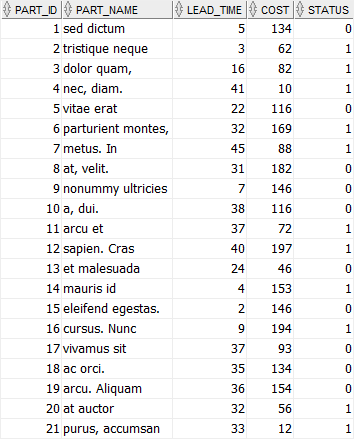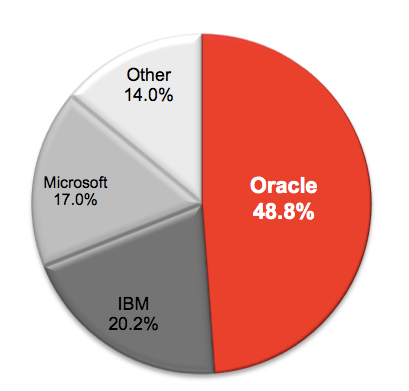
We have table with CLOB column and its storage is In- ROW. We want to alter table to change clob storage type to out- row. WHAT PROBLEM are you trying to solve that makes you thinking changing this will help? Oracle introduced the sorted gash cluster as a way to keep an index in-order with the table rows, a technique.
Oracle alter table add column example Oracle Database Tips by Donald Burleson. Enables Advanced Row Compression for future DML and also compress existing data. MOVE statement does not permit DML against the table while the statement is. Home Articles Misc Here.
SHRINK SPACE Command : Online Segment Shrink for Tables, LOBs and IOTs. Moving a row is different from moving an entire partition. With an atlter table move (including a partition move) or an alter index rebuild Oracle first allocates a new storeage extent and then begins to copy the data.
The table is already an existing table in database and currently the default value of the column is NULL. This table contains around million records. Recently we discovered that ROW _MOVEMENT is disabled on this. There is a hidden column in row -archival-enabled tables called ora_archive_state which indicates whether a row is archived or not. The hidden column is only displayed if specified in a query.
First, describe the table structure of HR. This Oracle DELETE example would delete all records in the suppliers table where there is a record in the customers table whose customer_id is greater than 2 and the customer_id matches the supplier_id. If you wish to determine the number of rows that will be delete you can run the following Oracle SELECT statement before performing the delete. Learn how to use it and see some examples in this guide. Alter table statement is a DDL statement.
Why would a row move and who or what controls that movement? Furthermore, by “move,” what exactly does move mean? A keyring plugin must be installed and configured to enable encryption. Table Compression Enhancements in Oracle Database 11g Release 1. In 11g it is now considered a mainstream feature that is acceptable for OLTP databases. Table shrink is an interesting feature provided by Oracle and this is very useful for the database reorganizations.
There are different options available with table shrink command. The table shrinking is achieved by moving the rows between the Oracle blocks. To perform the table shrinking we need to enable the row movement for the table. Sometimes we want to change the name of a column.

The dual table is just a single dummy row of data and is adde in this case, just so it can be ignored and we can instead execute the system function of our trigger rather than returning data of some kind. IDENTITY columns were introduced in Oracle 12c, allowing for simple auto increment functionality in modern versions of. A primary key is used to uniquely identify each row in a table. Includes adding new columns, altering existing column, renaming columns, and dropping columns. Dropping Unused Columns.
Displaying the row information for new columns. Alter a table column to. The row is migrated to another physical block in the table.
This article presents new features related to table compression in Oracle 11g. It’s not presenting compression related to Exadata. ALTER TABLE JOBS_Temp ADD (DUMMYNUMBER(2), DUMMYNUMBER(2)).
Nincsenek megjegyzések:
Megjegyzés küldése
Megjegyzés: Megjegyzéseket csak a blog tagjai írhatnak a blogba.